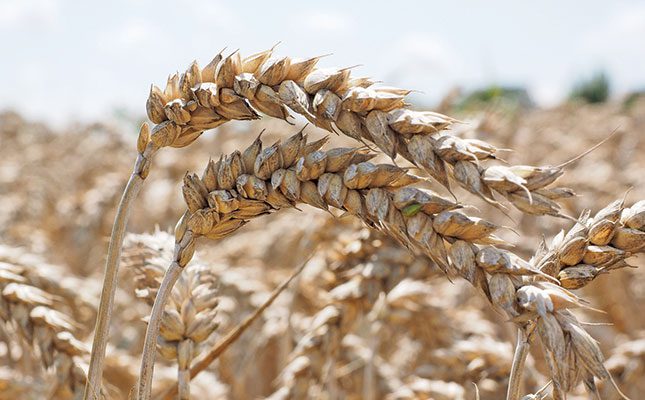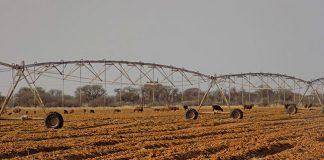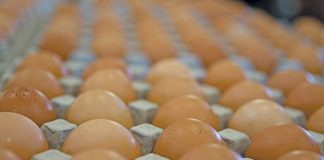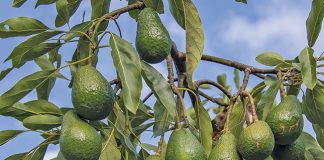
Photo: Pixabay
The main purpose of storing seed on-farm is either to keep seed safe and protected after purchasing until planting, or to preserve unused seed from one season for use in the next.
During processing, seed passes through a series of procedures before it ends up on-farm, ready to plant. These include harvesting, drying, cleaning, grading or sizing, and transporting.
Although the way in which seed passes through each of these steps can affect its viability and vigour, how it is stored on-farm can also have an impact on its storage life, viability and eventual yield.
Controlled environmental conditions
Seed storage is the preservation of seed under controlled environmental conditions to maintain viability (the ability to germinate and produce a ‘normal’ seedling) for long periods from harvesting through to planting of the processed seed by the farmer.
The Food and Agriculture Organization of the United Nations estimates that between 25% and 33% of the world’s seed is lost each year during storage, which has a significant effect on profitability and global food security.
Seed is a living organism, and this should be taken into consideration when storing it. “When working with seed, keep in mind that inside each seed is a dormant miniature plant awaiting the opportunity to grow,” says Pieter Craven, seed supply and quality lead at Syngenta.
Purchasing quality seed with a high yield potential is a huge investment, he adds, and the storage environment has a major impact on the quality and vigour of seed.
Quality seed is defined as seed with optimal moisture content and free of pathogen infestation and insect damage that can give rise to an even stand of strong, healthy seedlings under field conditions.
Seed storage conditions are thus essential for protecting seed from deterioration. If stored under unfavourable conditions, vigour and germination can be affected negatively. When storage conditions are inadequate, seed loses viability due to increased metabolic activity, which in turn reduces its physiological quality.
“To protect your investment, it’s critical to store seed under optimal conditions, giving attention to temperature, ventilation and relative humidity control,” says Craven.
Storage temperature and seed moisture content are the two most important factors affecting seed longevity, with moisture content usually more influential than temperature. The microclimate in the storage facility has a major impact on the quality of seed.
A temperature increase of only 6°C or a 1% rise in seed moisture content can have a detrimental impact on quality, Craven explains.
Key storage storage
- Moisture content and relative humidity According to JF Harrington, author of Seed Storage and Longevity (1972), each 1% decrease in moisture content (in the region of 5% to 14%) results in a doubling of the storage life of seed;
- Temperature He further states that the storage life of seed is halved with each 5,6°C increase in temperature (in the range 0°C to 50°C).
The following also significantly influences the storage life of the seed:
• Initial seed quality;
• Composition of the gaseous atmosphere;
• Packaging material;
• Structure and sanitation of the seed store;
• Rodent damage;
• Seed treatment;
• Fungicides and fumigants;
• Bacteria and fungi;
• Age of the seed.
Two additional points should be considered:
• Relative humidity and seed moisture content are directly correlated;
• The higher the temperature inside and outside the storage facility, the greater the chance that seed quality will deteriorate. The the same applies to seed moisture content.
“Make sure the seed is stored properly in a cool, dry and closed-off area, and try to limit a fluctuation in temperature. Ensure that the building or storage area is properly isolated, but still has good ventilation,” Craven advises.
Kobus van Huyssteen, technical manager at the South African National Seed Organisation, advises farmers to adopt the following key storage principles:
• Ensure that the storage area remains dry. Check that the roof is not leaking, as water dripping on the bags can cause the seed to start germinating or becoming mouldy;
• Place the bags on wooden pallets to keep them off the ground;
• Regulate the temperature in the storage area. Fluctuation in temperature is not advisable;
- Control pests, and keep the store clean;
• Don’t pack seed directly next to other products such as fertiliser and chemicals, as this can affect its viability. Keep a space of at least 1m between the seed and anything else;
- Don’t remove labels from containers or keep containers of different seed batches and varieties together. If varieties become mixed up, the crop may suffer major damage later with, for example, the spraying of herbicide;
- If seed has been stored for a long period, have it tested by a registered seed-testing laboratory to establish whether it is suitable for planting.
Planning and building a store
“When building a seed store, pay attention to good ventilation,” advises Craven.
“If seed is to be stored for a long period, consider installing a cooling system. Seed, especially that of soya bean, loses and gains moisture quickly, so storage areas must be well aerated to prevent moisture migration from warm areas and condensation in cool areas.”
He adds that the store should ideally have no windows and only one door. The latter must be able to close and seal properly and should have a lock in place.
The foundation of the building must be of concrete and, if possible, the building should have a tiled floor. If the floor is covered in screed, the cracks must be sealed regularly.
“Construct the floor, walls and roof of the seed store so that pests and insects are kept out. There should be no cracks where insects can hide and breed. All openings around ventilation holes, plugs and wiring should be sealed properly. Ensure, too, that birds cannot enter the storage area,” advises Craven.
Store management
He stresses that store management is equally important and offers the following advice:
- Keep records of when the seed is placed in storage;
- Store different types of seed in separate areas of the building to minimise contamination;
- Keep seed cool and dry to prevent mould and insects from attacking it;
- Inspect the store regularly for insects, birds and other pests such as mice and rats;
- Sanitise the storage area to control fungi, mites, insects, birds and rodents;
- Clean up any spilled seed. Damaged seed is particularly problematic, as insects seldom feed on whole seed;
- Avoid placing foreign matter in the store, as it is often a source of mould;
- Apply chemical control according to the advice of a chemical agent and the product label. Most seed should maintain a good germination rate for a couple of years.
Soya bean seed, however, is different. The germination rate should remain high in the first year (80% to 85%), but it may drop after the second year of storage to 65%.
It is therefore good practice to test the germination potential of soya bean seed stored for a year or two before planting.
Email Pieter Craven at [email protected], or Kobus van Huyssteen at [email protected].










